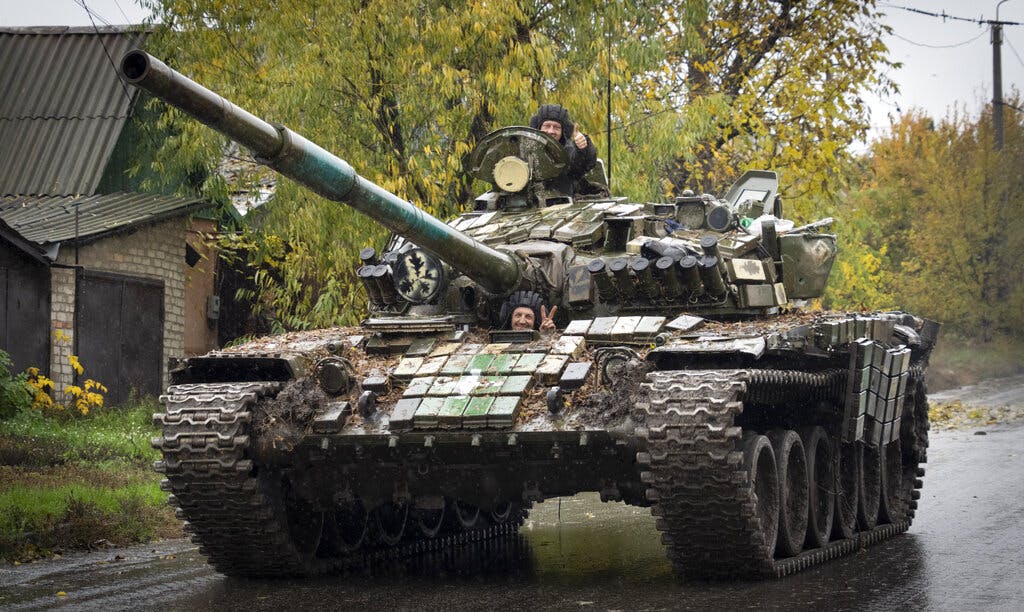Ex-CIA Chief Floats Idea of American-Led Multinational Force in Ukraine
In organizational terms, the coalition could be something along the lines of the American-led Multi-National Force that operated in Iraq between 2004 and 2009.

Could an American-led coalition of the willing be used in Ukraine to counter Russia? A former CIA director and retired four-star Army general, David Petraeus, made that suggestion in a recent interview with the French news magazine L’Express.
The notion of such a coalition — one that he said would be “led by the U.S. and not as a NATO force” — in addition to the uproar over a since retracted letter sent by left-wing congressional Democrats urging President Biden to engage directly with Russia, has added bumps to Mr. Biden’s already uneven road of global crisis management.
Earlier this month Mr. Petraeus said that America would destroy Russia’s troops if Vladimir Putin were to resort to using nuclear weapons in Ukraine. His new proposal for a multinational force, which in organizational terms could be something along the lines of the American-led Multi-National Force that operated in Iraq between 2004 and 2009, was not specifically tied to that potential threat. Yet it comes as the Kremlin’s military operation is fast metastasizing into a de facto multinational force: According to a new report, Russia is actively recruiting Afghan commandos to join the battlefield, and Iranians are helping Russia launch attack drones from illegally annexed Crimea. Russia has also reportedly courted Syrian fighters, but that has not been confirmed.
Ukraine’s military is certainly not underperforming: to the contrary. As Mr. Petraeus told L’Express, “Russia finds itself in an extremely difficult situation because Ukraine now has a bigger and more capable army on its soil than that of Russia —and it does not seem that Vladimir Putin has the possibility of reversing this situation.” He added that Ukraine “has done a much better job than Russia in recruiting, training, equipping (thanks to the huge help of over $18 billion worth of U.S. arms, ammunition and equipment), organizing and employing additional soldiers and units.”
Why, then, float the idea of a multinational force outside the aegis of NATO? Mr. Petraeus did not offer specifics, but the answer is at once simple and complex. Any direct NATO engagement in Ukraine is a well-known red line for Moscow. Mr. Petraeus hinted, however, that NATO would remain bound to the terms of the military alliance and would only join the war if one of its members came under attack. In this case, stripping an American-led coalition of the NATO label could in effect lend it more power, or at least a different kind of might.
The complicated part has less to do with Western punditry and prognostications than the fluctuating situation on the ground in Ukraine, and the reliable fogginess of war. With the hometown advantage, Ukraine’s military has successfully kept Mr. Putin’s soldiers out of Kyiv, and kicked them out of Kharkiv. Ukraine is even going after Russian targets across the border from Kharkiv, in neighboring Russian regions like Belgorod and Kursk. But — and it is a big one — according to Ukrainian officials the “heaviest of battles” lies ahead at Kherson. So does winter.
All this fuels unpredictability that could at a minimum push the protracted conflict past the one-year mark, and add more strain on manpower along with it. In June, President Zelensky told the BBC that between 100 and 200 Ukrainian soldiers were being killed every day; in August, Ukraine’s commander-in-chief, Valeriy Zaluzhniy, said that nearly 9,000 soldiers had been killed. At least 10,000 have been reported injured, some critically, and the number is likely higher.
Thus it is not exactly a surprise that the American Conservative surmises that Mr. Petraeus’s suggestion of a force intervention is “designed to rescue Ukrainian forces from defeat and presumably compel Moscow to negotiate on Washington’s terms, whatever those terms might be.”
Judging by President Obama’s failure to eject Russia from Crimea in 2014, the notion of Mr. Biden brokering a solid peace agreement seems fanciful. Yet few would question that boots on the ground would be taken more seriously by a modern-day warlord like Mr. Putin, who doesn’t trade in nuance, than recanted missives from foreign policy neophyte Democrats. More cryptic is the American Conservative’s claim that “the Russian sledgehammer scheduled to fall on the Zelensky regime in the November or December timeframe, or whenever the ground freezes, will crush whatever remains of Ukrainian forces.”
That seems overly pessimistic. Although the looming battle for Kherson, and possibly for Crimea after that, means more short-term pain for Ukraine, it could also spell more long-term gain. Whatever merit the idea of multinational force may or may not have, it could give Mr. Biden some food for thought at an opportune time: Despite attempts to prevent it from happening, Messrs. Biden and Putin may find themselves in the same room next month.

